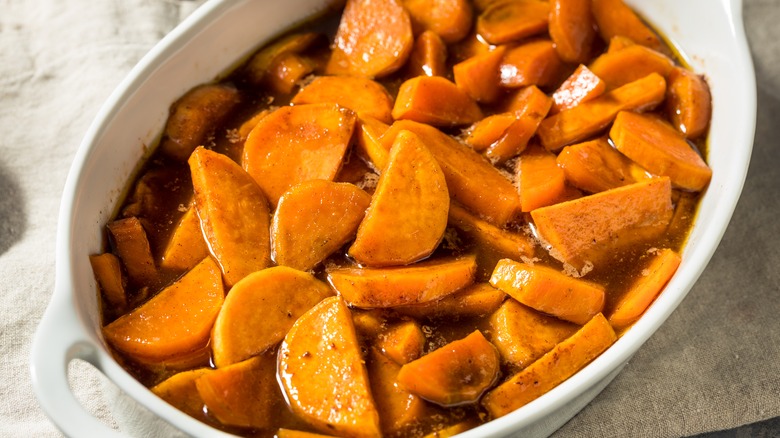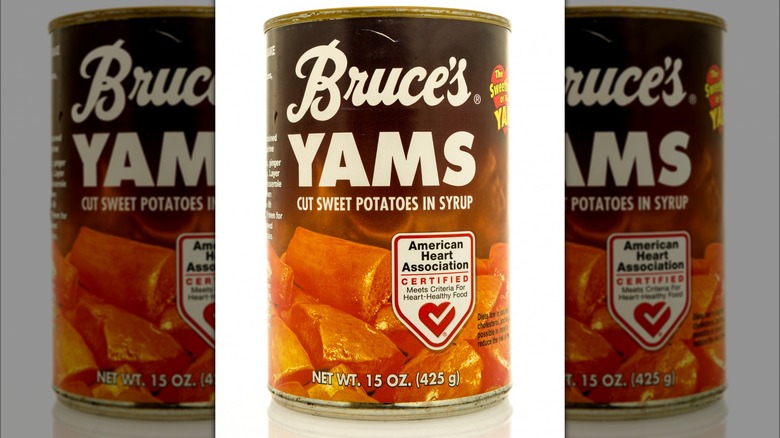The Sneaky Way Canned Sweet Potatoes Pretend To Be Yams
To understand how canned sweet potatoes pretend to be yams, you must first understand the difference between yams and sweet potatoes. We tend to think of yams and sweet potatoes as different types of potatoes to use interchangeably in sweet, starchy side dishes. However, yams aren't potatoes at all. Instead, they are an African native tuber with yellow to off-white flesh, thick brown skin, and an earthy, starchy flavor and texture. Like sweet potatoes, yams come in different varieties; the popular purple ube is a type of yam. Nevertheless, even the starchiest yam isn't as sweet as a sweet potato.
Sweet potatoes are American cultivars with thin skin and a pillowy, creamy dark orange or yellow pulp that is as sweet as its name. Sweet potatoes come canned in a simple syrup and labeled as yams, but if you check the ingredient list, you'll likely see that they are, in fact, sweet potatoes. Moreover, many cans print "Yams" in large font on the label, under which reads, "Candied sweet potatoes" in smaller print, perpetuating the misconception that yams and sweet potatoes are one and the same.
Therefore, the sneaky way canned sweet potatoes pretend to be yams is technically a marketing ploy that plays to common cultural misconceptions. A quick look at the hue of their flesh when you pop the can open is an even more obvious indicator. Yams are hard to find raw in the U.S., let alone canned.
How sweet potatoes became marketed as yams
Considering the vast differences between yams and sweet potatoes, you're probably wondering how canned yams became synonymous with candied sweet potatoes. The answer lies in the complicated history of African American culture and agricultural practices in the Deep South. Yams are an important part of West African cuisine — mashed into paste, dried and ground into powder, and incorporated into stews.
The African diaspora accounts for Black American heritage and cultural practices, a large part of which includes cooking traditions and ingredients. Africans consumed their native tubers on the slave ships that brought them to American soil — though sweet potatoes, which acted as the closest substitute, soon took yams' place in the New World. When sweet potatoes became a major crop in the Deep South during the early 20th century, farmers co-opted the term "yam" to differentiate them from the white or cream-colored savory potatoes.
Candied yams, or sweet potatoes as it were, have thus garnered significance and popularity as a Southern soul food side dish. You'll see it served alongside black-eyed peas, and collard greens and ham hocks at Kwanzaa, the quintessential celebration of Black heritage. Despite the marked differences between yams and sweet potatoes, canned sweet potatoes are marketed as yams to uphold a century-old legacy that fuses African and African American cultures.

